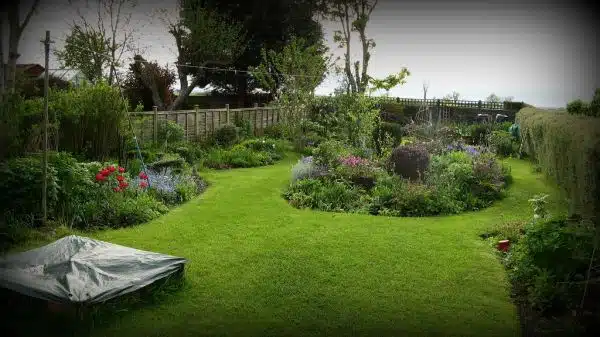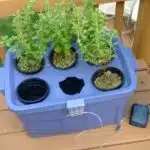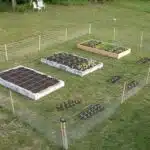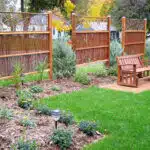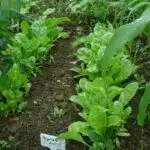Gardening can be both therapeutic and rewarding. Whether you are a seasoned gardener or a beginner, planning your garden can seem like a daunting task. However, with the right steps and preparation, anyone can start their own garden.
In this article, we will outline 14 steps to help you start and plan your garden. From selecting the right location to choosing the perfect plants for your space, these steps will provide you with a solid foundation for creating a beautiful and thriving garden. By following these steps, you will not only enjoy the benefits of gardening but also serve others by providing fresh produce and flowers for your community.
Assess Your Space And Needs
Gardening is a fulfilling activity that not only beautifies your surroundings but also provides you with fresh produce. Before starting your garden, it is crucial to assess the space you have available and your needs. Consider if you have enough space for a traditional in-ground garden or if container gardening or vertical gardening might be a better fit for your circumstances.
Container gardening involves growing plants in pots or containers instead of directly in the ground. This type of gardening is ideal for those who have limited outdoor space, as pots can be placed on patios, balconies, or even windowsills. Vertical gardening is another option for those with limited space. It involves planting upwards instead of outwards and can be done using trellises or other structures.
Assessing your space and needs is crucial when planning a garden because it will help determine what kind of garden will work best for you. Container and vertical gardening are great options for those with limited space, while traditional in-ground gardens are ideal for larger areas. Once you’ve assessed your space, it’s time to determine your garden style and goals.
Determine Your Garden Style And Goals
Assessing your space and needs is a crucial step in starting a garden. After determining how much space you have available, it’s important to consider what kind of garden aesthetics you want to achieve. Do you want a structured, formal garden, or do you prefer a more natural look with wildflowers and native plants? Keep in mind that your personal style and goals will guide your choices.
Once you’ve assessed your space and aesthetic preferences, it’s time to set realistic goals for your garden. Consider factors like the amount of time and resources you’re willing to invest in the project, as well as any physical limitations you may have. If you’re new to gardening, start small with a few easy-to-grow plants before expanding your repertoire.
Remember that setting realistic goals means not biting off more than you can chew. Avoid planting too many different types of plants or attempting complex landscaping projects without proper research and planning. Always take into account the amount of sunlight and soil quality necessary for each plant before deciding on a location. With these considerations in mind, you can confidently move forward with planning and creating your dream garden.
Choose A Location With Adequate Sunlight And Soil Quality
Choosing the right location for your garden is essential for a successful harvest. The first thing to consider is sunlight. Most vegetables require at least six hours of direct sunlight each day. If you have limited sunlight, you can still grow shade-loving plants such as lettuce, spinach, and radishes. Tips for shade gardens include planting them on the north side of your house or under trees that provide filtered light.
Another crucial factor to consider when selecting a location for your garden is soil quality. The soil should be rich in nutrients and well-draining. Before planting, it’s essential to test the soil to determine its pH level and nutrient content. By doing so, you can make any necessary adjustments to ensure that your plants thrive. Importance of soil testing cannot be overstated since it helps prevent problems such as poor plant growth, pest infestations, and diseases.
In summary, choosing a location with adequate sunlight and soil quality are two critical factors in planning your garden successfully. Tips for shade gardens include planting on the north side of your house or under trees that provide filtered light. Soil testing is also vital to ensure optimal plant growth and prevent problems down the line. With these factors in mind, you’ll be able to select a site that will provide an excellent foundation for a bountiful harvest! In the subsequent section, we will discuss how to decide on garden bed types and sizes based on your needs and preferences.
Decide On Garden Bed Types And Sizes
When planning a garden, one of the primary considerations is choosing the type and size of garden beds. Different garden bed materials are available, including wood, stone, concrete, and metal. Each material has its advantages and disadvantages that should be considered before making a decision. For instance, wood is an affordable option but may rot over time. On the other hand, stone and concrete are durable but may not blend well with the surrounding landscape.
Another consideration when deciding on garden beds is whether to use raised or in-ground beds. Raised beds are constructed above ground and can provide better drainage while in-ground beds require digging into the soil. Raised beds also offer better control over soil quality as you can add soil mixtures that suit your plants’ specific needs. However, they tend to dry out faster than in-ground beds since they’re above ground level.
When selecting between raised and in-ground beds for your garden, it’s important to consider factors such as your plants’ water requirements, soil fertility levels, drainage needs and accessibility preferences. You may also need to consider practical issues like cost and availability of materials for construction depending on what kind of resources you have at hand or how much you’re willing to invest in your garden project overall. Regardless of which type of bed you choose to go with, remember that careful planning is key to getting the most out of your gardening experience!
As you decide on the type and size of garden bed that will work best for your gardening goals and landscape features, keep in mind that preparing the soil for planting is just as crucial a step! The next section will cover some tips on how to do this effectively so that you can enjoy healthy plant growth throughout your growing season without any hiccups along the way.
Prepare Your Soil For Planting
As the saying goes, “The foundation of every great garden is properly prepared soil.” Before planting anything, it’s crucial to ensure that your soil is healthy and nutrient-rich. One way to do this is by conducting a soil test, which can reveal any imbalances or deficiencies that need to be addressed. Soil testing kits are widely available online or at your local gardening store.
Once you’ve received the results of your soil test, it’s time to start preparing the ground for planting. If your soil needs improvement, composting techniques can help. Composting involves combining organic matter like leaves and grass clippings with kitchen scraps and other waste materials to create a rich soil amendment that improves drainage and fertility.
To get started with composting, you’ll need a compost bin or pile where you can add your organic materials. Keep in mind that different materials break down at different rates, so it’s important to balance out the types of waste you’re adding. Aim for a mix of carbon-rich “brown” materials like dried leaves or shredded newspaper and nitrogen-rich “green” materials like vegetable scraps or grass clippings. Turn your compost pile regularly to ensure even decomposition.
- Rich, fertile soil is essential for healthy plants.
- Composting reduces waste and creates sustainable gardening practices.
- Creating a compost pile can be an enjoyable activity for individuals seeking to minimize their environmental impact.
With properly prepared soil in hand, you’re now ready to move on to selecting plants that thrive in your climate and soil type.
Select Plants That Thrive In Your Climate And Soil Type
When choosing plants for your garden, it’s important to consider the climate and soil type of your area. Certain plants thrive in specific environments, so selecting varieties adapted to your local conditions can increase your chances of a successful garden. To determine which plants will do well in your area, you may want to conduct a soil test.
There are several soil testing methods available, including DIY kits and professional laboratory analysis. These tests can help you identify the pH level of your soil and whether any nutrients are lacking or present in excess. Armed with this information, you can choose plants that are better suited to the conditions in your garden.
Climate adaptation strategies are another important consideration when selecting plants for your garden. If you live in an area with hot summers or cold winters, look for plants that can tolerate these conditions. Native species are often well adapted to local climates and can be a good choice for low-maintenance gardening. Additionally, selecting a mix of annuals and perennials can provide season-long interest while accommodating changing weather patterns.
In summary, choosing plants that thrive in your climate and soil type is essential for creating a healthy and beautiful garden. Conducting a soil test and considering climate adaptation strategies can help guide your plant selection process. In the next section, we’ll explore how to create a planting plan and layout for your garden space.
Create A Planting Plan And Layout
When creating a planting plan and layout, it is important to assess the size of the garden and identify the sun exposure in order to choose the appropriate plant types. Planting depths and spacing should be considered when drawing up a plan of the garden, as well as materials for paths and focal points. Structures, garden edges and plant groups can be used to create a more interesting design, while colors, quantities and placements should be planned beforehand.
Assess Garden Size
As you begin to plan your garden, it’s important to assess the size of the area where you’ll be planting. This step is crucial because it will determine what types of plants you can grow and how many of them you can fit in the space. It’s important to consider factors such as sunlight exposure, soil quality, and drainage when determining the size of your garden.
Maximizing yield is a key consideration when planning your garden layout. Whether you’re growing vegetables, fruits or flowers, it’s important to make the most out of the space available to you. One way to do this is by incorporating container gardening into your planting plan. Container gardening allows you to grow plants in pots or other containers, which can be placed on patios or other small spaces that might not have enough room for a traditional garden.
When assessing the size of your garden, keep in mind that bigger isn’t always better. Start small and gradually expand as you gain experience and confidence in your gardening abilities. Remember that a well-planned and maintained small garden can produce just as much yield as a larger one. By considering factors such as maximizing yield and incorporating container gardening into your plans, you’ll be well on your way to creating a beautiful and productive garden space.
Choose Plant Types
After assessing the size of your garden, the next step is to choose the types of plants you want to grow. One important factor to consider when creating a planting plan and layout is companion planting. This strategy involves growing different plants together that complement each other in terms of their nutrient needs, pest control strategies, and growth patterns. For example, planting marigolds with tomatoes can help deter pests that are attracted to tomato plants.
Another important consideration when choosing plant types is pest control strategies. It’s important to choose plants that are resistant to common pests in your area or have natural defenses against them. Additionally, incorporating beneficial insects such as ladybugs and praying mantises into your garden can help control pests naturally without the use of harmful chemicals.
When choosing plant types for your garden, it’s also important to consider factors such as climate and soil conditions. Different plants thrive in different environments, so it’s important to choose varieties that are well-suited for your specific location. By taking these factors into account and carefully selecting the right mix of plants for your garden space, you can create a healthy and thriving ecosystem that will produce bountiful yields year after year.
Purchase Seeds Or Plants From A Reliable Source
To ensure the success of your garden, you need to purchase high-quality seeds or plants from a reliable source. Buying from a reputable supplier guarantees that you will have healthy and disease-free plants that will thrive in your garden. This step is vital if you want to enjoy the benefits of organic gardening, as it ensures that you are not introducing harmful chemicals into your garden.
Before making any purchases, it is essential to do some research on the types of plants that grow well in your area. Consider the climate and soil conditions and choose seeds or plants that can withstand these conditions. You can also save money on garden purchases by buying seeds instead of plants, as they are cheaper and allow you to grow more for less.
When purchasing seeds or plants, look for varieties that are disease-resistant and require minimal maintenance. This way, you can avoid spending too much time and money on pest control or fertilizer. Additionally, consider buying heirloom varieties as they tend to be hardy and more flavorful than hybrid varieties. Following these tips will help you get the most out of your gardening experience and ensure a bountiful harvest.
As soon as you have purchased your seeds or plants, it’s time to plant them in your garden bed. In this next section, we’ll discuss how to plant your garden correctly and how frequently to water it to keep it healthy and thriving throughout the growing season.
Plant Your Garden And Water Regularly
- When choosing plants for a garden, consider the climate, soil type, and amount of sunlight available in the area.
- Preparing the soil for a garden is essential for successful plant growth, and can be done by tilling and adding organic matter.
- Planting seeds and seedlings is an easy way to populate a garden, but be sure to follow any instructions that come with the seeds.
- Water plants regularly and deeply, making sure to monitor soil moisture to prevent over or under watering.
Choose Plants
When it comes to choosing plants for your garden, there are a few factors to consider. One important aspect is companion planting, which involves selecting plants that will thrive when planted together. For example, planting basil alongside tomatoes can improve the flavor of both crops while also deterring pests. Similarly, planting marigolds with vegetables can help repel harmful insects. It’s essential to research which plants work well together before making any decisions.
Another option for those with limited space or poor soil quality is container gardening. This method involves using pots or other containers to grow plants instead of traditional garden beds. Container gardening allows for greater flexibility in terms of plant selection and placement and can be used in small spaces such as balconies or patios. However, it’s important to choose the right size container for each type of plant and ensure proper drainage.
Ultimately, choosing plants for your garden should be a fun and exciting process. Consider what types of fruits, vegetables, or flowers you want to grow and how much space you have available. Don’t forget to factor in companion planting and container gardening if applicable. By carefully selecting your plants, you’ll be on your way to a thriving and bountiful garden.
Prepare Soil
Once you have decided on the plants for your garden, the next step is to prepare the soil. Soil preparation is a crucial factor in ensuring the success of your garden. The quality of your soil can determine how well your plants will grow and produce.
One way to improve soil quality is through composting. Composting involves breaking down organic matter such as food scraps, leaves, and grass clippings into a nutrient-rich fertilizer for plants. Adding compost to your soil can improve its texture, structure, and fertility. It also helps retain moisture and encourages beneficial microorganisms that aid plant growth.
Another important step in preparing your soil is to conduct a soil test. A soil test can help determine the pH level of your soil and identify any nutrient deficiencies that need to be addressed. It’s essential to know the pH level of your soil since different plants thrive in different pH levels. Additionally, knowing which nutrients are lacking in your soil can help you determine which fertilizers or amendments to add.
In conclusion, preparing the soil is an essential step in planting a successful garden. Composting and conducting a soil test are two critical methods in improving the quality of your soil. By taking these steps before planting, you’ll be setting up your plants for optimal growth and production.
Add Mulch To Conserve Moisture And Prevent Weeds
Mulching is an essential step in garden maintenance as it helps retain soil moisture and suppress weed growth. Benefits of mulching include reduced water usage, increased nutrient retention, and protection against soil erosion. Additionally, mulch materials can enhance the aesthetic appeal of a garden.
There are various types of mulch materials that can be used in gardens. Organic options such as wood chips, straw, and leaves provide nutrients as they decompose over time. Inorganic materials like rocks or rubber chips do not break down but offer long-lasting coverage. When selecting a mulch material, consider the specific needs of your plants and the climate in your area.
To optimize the benefits of mulching, follow these tips:
- Apply a layer of 2-4 inches thick to prevent weed growth.
- Avoid placing mulch directly on plant stems to prevent rot.
- Reapply annually or as needed to maintain desired coverage.
By incorporating mulching into your garden maintenance routine, you can enjoy healthier plants with less maintenance required. In the subsequent section, we will discuss how to create a maintenance schedule for weeding, pruning, and fertilizing to ensure your garden thrives throughout the growing season.
Create A Maintenance Schedule For Weeding, Pruning, And Fertilizing
Gardening is not only a creative and rewarding hobby but also requires consistent maintenance to keep it healthy and thriving. Creating a maintenance schedule for weeding, pruning, and fertilizing your garden is essential to ensure that your plants receive the necessary care they require. It is like being a caretaker of a beautiful garden, where every plant requires attention and care like children.
To make the process simpler, we recommend creating a table that outlines the tasks you need to perform weekly, monthly or seasonally. The table can help you plan out your gardening activities and track your progress over time. It will provide you with an overview of what needs to be done regularly in your garden, so you can plan accordingly.
In addition to regular maintenance, organic pest control and companion planting are two effective ways to ensure the health of your plants naturally. Companion planting involves planting crops together that complement each other’s growth while deterring pests. Organic pest control methods include using natural predators or homemade sprays made from ingredients such as garlic or chili peppers. These methods are safe for humans and pets and do not harm beneficial insects such as bees or butterflies. By incorporating these techniques into your maintenance schedule, you can protect both your plants’ health and the environment’s well-being.
As you continue caring for your garden through regular maintenance and natural pest control measures, it is important to monitor your plants’ growth and health closely. Keep an eye out for any signs of disease or distress in individual plants so that you can address them promptly before they spread. Regularly checking on your garden allows you to observe its changes over time while ensuring its overall health remains optimal. With proper planning and care, maintaining a beautiful garden can be a fulfilling experience that brings joy year-round.
Monitor Your Plants’ Growth And Health
Monitoring your plants’ growth and health is crucial to ensuring a successful garden. Regular observation of your plants allows you to identify problems early on, such as nutrient deficiencies or pest infestations. This way, you can take action before the problem becomes too severe and impacts the overall health of your garden.
One way to maintain healthy soil in your garden is through composting. Composting benefits your garden by adding essential nutrients back into the soil. It also helps retain moisture, reduces erosion, and promotes healthy root development in plants. You can create compost using kitchen scraps, yard waste, and other organic materials. Simply layer these materials in a compost bin or pile and let nature do its work.
Pest management techniques are also crucial for maintaining a healthy garden. There are several approaches you can take to control pests without harming the environment or other beneficial organisms in your garden. Some examples include natural predators like ladybugs or praying mantises, companion planting with certain herbs or flowers that repel pests, or using organic insecticides like neem oil. By implementing these techniques, you can keep pests at bay and ensure a bountiful harvest for your efforts.
As you continue to monitor your garden’s growth and health, it’s important to remember that timing is everything when it comes to harvesting your crops. Knowing when to harvest ensures that they are at their peak flavor and nutritional content. In the next section, we will discuss how to determine when it’s time to harvest various types of vegetables and fruits from your garden.
Harvest Your Crops At The Right Time
Harvesting your crops at the right time is crucial to maximizing yield and minimizing waste. Knowing the right time to harvest can be tricky, but there are some best practices that you can follow to ensure success. One common mistake is waiting too long to harvest, which can result in overripe or even rotten produce.
To avoid this mistake, it’s important to keep an eye on your plants and check them regularly for signs of maturity. The best way to determine when a crop is ready for harvest is by looking at its color, size, and texture. For example, tomatoes should be picked when they are firm and bright red in color, while cucumbers are ready when they are dark green and about 6-8 inches long.
Once you’ve harvested your crops, it’s important to store them properly to prevent spoilage. This means keeping them cool and dry, and avoiding exposure to direct sunlight or moisture. If you have excess produce that you can’t use or share with others, consider preserving it through canning or freezing so that you can enjoy it later on.
Now that you know how to harvest your crops successfully, it’s time to share your garden’s bounty with others. Whether you donate your excess produce to a local food bank or share it with friends and family, giving back is a great way to spread joy and build community around your love of gardening. So don’t be afraid to reach out and share what you’ve grown – after all, gardening is all about nurturing relationships as well as plants!
Share Your Garden’s Bounty With Others
Sharing the bounty of your garden with others is a rewarding experience that can benefit both you and your community. There are many ways to share your harvest, from donating excess produce to a local food bank or shelter, to hosting a community potluck with dishes made from your garden’s offerings. By sharing what you grow, you not only reduce food waste but also help to address issues of food insecurity in your area.
One way to share the fruits of your labor is by setting up a produce stand or participating in a local farmers market. This allows you to sell or trade excess produce while connecting with other members of the community who share an interest in gardening and fresh, locally grown food. Additionally, creating a neighborhood exchange program where neighbors can trade their own harvests promotes social interaction and fosters a sense of community.
There are many benefits to sharing your garden’s bounty beyond just reducing waste and addressing issues of food insecurity. Sharing can also lead to improved mental health as it provides an opportunity for social engagement and fosters feelings of generosity and goodwill towards others. Furthermore, by sharing knowledge about gardening techniques and plant varieties with others, you contribute to the collective wisdom of the gardening community and help promote sustainable practices.
As you reflect on the success of your garden this season, consider how you can continue to share its bounty with others in meaningful ways. Whether it be through donating excess produce, participating in local markets or exchange programs, or simply sharing knowledge and resources with others in your community, there are countless opportunities for giving back through gardening.
Reflect On Your Garden’s Success And Lessons Learned
Garden reflection is an essential aspect of gardening that helps gardeners to evaluate their successes and lessons learned. It is a way of assessing what went right and wrong in the garden, which can help improve future gardening endeavors. A gardener should take time to reflect on their garden by looking back at what they planned, executed, and harvested.
Lessons learned from gardening are invaluable for future success. It is essential to identify what worked well and what did not work in the garden. For instance, if some plants thrived while others withered, it is necessary to analyze the factors responsible for this outcome. This analysis helps a gardener determine what changes they need to make in their next planting season.
In conclusion, reflecting on your garden’s success and lessons learned is crucial for every gardener as it enables them to plan better for future seasons. By analyzing the successes and failures of a previous season, gardeners can make informed decisions about their next planting season. The ultimate goal of reflection is to achieve a more productive and rewarding garden experience.
Conclusion
Gardening is a rewarding and fulfilling activity that can provide a range of benefits for both individuals and communities. By following these 14 steps, anyone can start and plan a garden successfully. Assessing the space available, determining goals, choosing appropriate garden bed types and sizes, preparing soil, monitoring plant growth and health, harvesting crops at the right time, sharing with others, and reflecting on lessons learned are all essential components of successful gardening.
Starting a garden is like planting a seed – it requires patience, dedication, and care to grow into something beautiful. Just as each plant has its unique needs for growth and development, each gardener must adapt their approach to suit their individual circumstances. With the right knowledge and resources at hand, anyone can cultivate a thriving garden that nourishes not only the body but also the soul. So go ahead – dig in your hands and let your green thumb flourish!
Image Credits
- “Back garden” by Shelley & Dave (featured)

